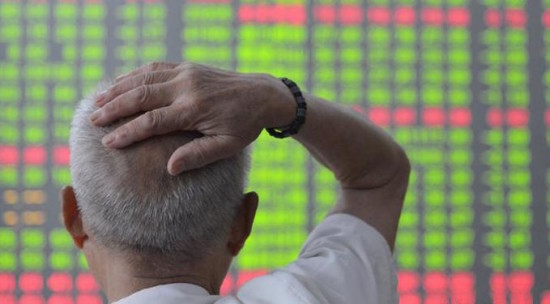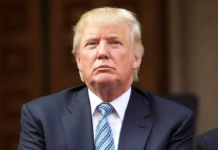Failure to stop stock market plunge has shaken the image of a ‘strong’ regime
Vincent Kolo, chinaworker.info
“The big news here isn’t about the Chinese economy; it’s about China’s leaders. Forget everything you’ve heard about their brilliance and foresightedness. Judging by their current flailing, they have no clue what they’re doing.”
This is the blunt verdict of Paul Krugman, the Nobel Prize winning economist, on China’s stock market crash and the Chinese regime’s attempts to contain it. A staggering $4 trillion has been wiped off share values since the middle of June, as the stock markets in Shanghai and Shenzhen have fallen by 30 percent. This is a sum greater than Germany’s annual output (GDP). It also exceeds the value of China’s foreign exchange reserves ($3.7 trillion), the world’s largest, which are often described as a war chest to meet financial emergencies.
The crash has acted as a wake-up call for global capitalism, for which China’s economy has served as the main growth engine over the past seven years. As the world’s second largest economy, China accounts for about 16 percent of global GDP, with the US accounting for 19 percent (measured by purchasing power). Given that it consumes around half the world’s minerals – iron ore, coal, copper and aluminium for example – commodity exporters from Australia to Brazil are showing symptoms of catching economic flu as China sneezes.
Faith in government shaken
The attitude of many capitalist commentators was – as Krugman points out – that the dictatorship of China’s misnamed ‘Communist’ party (CCP) were ‘brilliant’ economic managers who through clever use of state intervention and seemingly unlimited financial resources could always pull a rabbit out of the hat whenever economic problems demanded this. In the past few weeks this faith in the CCP has been shaken to its core. Especially as the stock market continues to disobey ‘party orders’, the CCP leaders are cast in the role of King Canute, who famously ordered the waves to turn back only to get splashed.
The regime’s failure, so far, to stop the stock market rout, despite spending $800 billion in the past month according to Reuters, on buying shares and other rescue measures, has also struck like a bomb blast for many people inside China especially the more than 60 million small traders who have been coaxed into the stock market over the past year.
“My father has lost 90 percent of his savings,” says Yu, a member of the CWI in China (the sister organisation of the Socialist Party which is banned in China). “He and his workmates who work in a car components factory decided to buy shares in March this year,” he says. “Everyone in China is discussing the stock market. The government controlled media encouraged ordinary people to invest in shares, predicting the stock market [Shanghai Composite Index: SCI] was heading for 10,000. My father and his workmates have suffered big losses and feel foolish for believing the government.”
‘State bull market’
In fact, the SCI surged to 5,200 points on 12 June, up from 2,000 in July 2014 (a rise of 150 percent). But now it’s sunk back to 3,500 points. This was a state manipulated ‘bull market’ or financial boom, fuelled not just by a frenzied media campaign but also by debt. It was known as the ‘state bull run’ and even as ‘Xi Jinping’s bull market’ – after China’s president.
In recent years the government gave full rein to practises such as ‘margin trading’ – practises that are more tightly controlled in ‘mature’ stock markets such as New York and London. Margin trading is seen as one of the aggravating factors behind the 1929 Wall Street crash. Officially, 10 percent of all Chinese shares have been bought on credit (‘on the margin’), but this is an underestimate because it does not include China’s huge shadow banking sector – financial companies outside the regulated banking system. Counting unofficial lending, economists believe the true scale of ‘margin debt’ in China today equals 25 percent of the stock market’s value – compared to 12 percent in America prior to the 1929 crash.
Despite many warnings, China’s rulers seem to have been blind to the risks involved in this policy. The financial sector sizzled ahead with growth of 17 percent in the first half of this year. The Financial Times reported that 4,000 new hedge funds were opened in the period from January to May.
This has been the main ingredient keeping China’s economy growing as manufacturing, construction and even the service sector (apart from financial services) have slowed or actually shrunk over the same period. Official claims of 7 percent GDP growth need to be taken with a pinch of salt.
A turning point came with June’s market crash, reflecting a reassertion of economic realities upon the fantasy world of financial speculation. This is a calamity for the CCP dictatorship, leading to a series of policy zigzags and missteps that even its state media monopoly cannot fully hide. During three weeks of unprecedented measures to ‘stabilise’ the market, in which at one point 97 percent of the stock market was suspended from trading, the market rose 16 percent, clawing back some of its losses. But then on 27 July, ‘Black Monday’, the Shanghai market dropped 8.5 percent, the second worst daily loss on record. Within the following week almost all the temporary gains arising from the government’s hugely expensive rescue program have been erased. The CSI finished down 14 percent in July, its worst monthly result for six years. Many are asking what happened to the promised ‘stabilisation’ – and others are asking why such unrealistic promises were made in the first place. This also has political repercussions as the case of Yu’s father illustrates.
One reason why the government inflated a stock market bubble was to stimulate a ‘wealth effect’ among the urban middle classes and better-off sections of the working class, to tie these layers into supporting the dictatorship and also to boost consumer spending which is suffering as the economy slows sharply. Another even more important reason was to use a booming stock market to reduce the economy’s reliance on debt, which now threatens to strangle economic growth. However, the slump in share values means that instead of relieving the government’s debt problems, the stock market has added a new debt burden to the equation.
Japanese disease
Following a massive economic stimulus programme implemented in November 2008 to offset the effects of the global capitalist crisis, China experienced a series of debt-driven asset ‘bubbles’ – in construction, investment, shadow banking and now the stock market – each of which has begun to burst. Rather than allowing the bursting bubbles to run their course however (as orthodox neo-liberals advocate) the government has unveiled massive financial support measures in an attempt to contain the problem. The latest of these is its “patriotic fight” to save the stock market. This latest move has divided opinion among international commentators, with some like Krugman predicting fiasco, while others like IMF chief Christine Lagarde have defended Beijing’s actions as no different from the US and other governments adopting massive market rescue measures such as ‘quantitative easing’.
But China’s economic fundamentals are catching up on the regime as a gigantic debt mountain now limits its scope for financial stimulus on the same scale as before. In the past seven years, China’s debt has quadrupled to $28 trillion, a rate of increase that is unprecedented for a large economy. China’s debt-to-GDP ratio at 282 percent dwarfs the level in Greece, at 160 percent.
As the economy slows to its weakest growth rate in 25 years, this debt ‘time bomb’ poses multiple problems for the government. Firstly, debt is still growing twice as fast as the economy – for every yuan of GDP an additional two yuan of debt is created. Secondly, prices are falling (deflation), which squeezes company profits and makes repaying the debt more difficult. The government has cut interest rates four times in the past 8 months and there are calls for further rate cuts to stabilise the stock market. But despite these measures the real cost of loans has continued to increase – due to deflation – and this is aggravating the debt burden on companies and local governments.
China now finds itself in a similar dilemma to Japan in the early 1990s, when its financial and property bubbles burst and much of its economy was ‘zombified’ – meaning that companies and banks would have collapsed without large scale government support. Japan has still not escaped from this stagnation crisis, and China – a much poorer country in per capita terms – could now face a similar drawn out crisis.
China’s Putin
The CCP regime has many reasons to fear these developments. It has kept itself in power through a combination of rapid economic growth and state repression. Arrests, censorship and hi-tech surveillance have all increased markedly since Xi Jinping took office in late 2012, alongside increasing nationalism and the projection of Xi as a ‘strong man’ on the global stage. Partly modelling himself on Russia’s Vladimir Putin, Xi has moved to concentrate more power in his own hands – over the military, police and party-state machine, but also over economic policy, which is not usually in the president’s ambit. This has been achieved by waging the most intense elite-level power struggle for decades under the guise of an anti-corruption purge.
Xi, whose family are worth $376 million – which is three times the wealth of Britain’s super-rich cabinet – is a representative of China’s ‘princelings’. These are the offspring of veteran CCP leaders who over the past two decades have acquired enormous wealth and power over key sectors of the economy. Xi’s strategy is to fortify the CCP’s dictatorial apparatus while implementing more neo-liberal capitalist policies to ‘normalise’ and entrench the economic power of the princelings. But his shift away from the ‘collective dictatorship’ model of the past can seriously backfire, with Xi being personally held responsible for every setback – as the current stock market crisis shows.
Xi’s policies are not a question of ‘style’ but are determined by a deepening crisis within the regime and a growing fear of revolutionary tremors. Strikes by workers – mostly to demand unpaid wages or compensation when factories close – have tripled in the past 12 months. Especially in the southern manufacturing heartland of Guangdong, workers’ struggles have become more organised and structured, and this has enabled some industrial battles to last longer or to resume when employers or authorities break their promises.
The regime’s fears were reinforced by the mass democracy movement in Hong Kong last year, the ‘Umbrella Revolution’, which at different stages involved 1.2 million people (almost one in six of the city’s population). Similar mass protests engulfed Taiwan, which China claims as its territory, and Macau. Turmoil on the edges of Xi’s realm is a foretaste of what can happen inside China in the next period.





